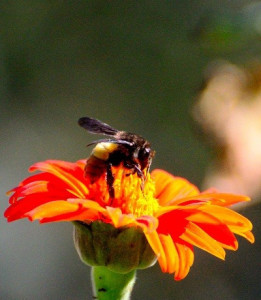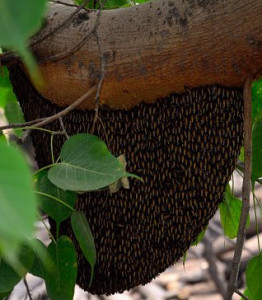
Honey bee
The honey bee is a vital insect species found in the Great Himalayan National Park (GHNP) and plays a key role in maintaining the park’s ecological balance. More than just a honey producer, the honey bee is a critical pollinator, supporting the health of wild plants and agricultural crops alike. In GHNP’s biodiverse landscapes—from alpine meadows to subtropical forests—honey bees contribute silently but significantly to life in the Himalayas.
Habitat and Behavior in GHNP
Honey bees are found throughout GHNP’s lower and middle altitude zones, particularly in the Tirthan and Sainj valleys, where wildflowers bloom during spring and summer. These areas are rich in nectar sources, supporting both wild and domesticated bee populations. Local communities in buffer zones of the park also practice sustainable beekeeping, which has both ecological and economic benefits.
Honey bees live in large colonies and build hives in tree hollows, rock crevices, or man-made boxes. Each colony consists of a queen, worker bees, and drones, each with specific roles vital to hive function.
Role in Pollination and Ecosystem Health
As pollinators, honey bees are essential for the reproduction of many flowering plants within GHNP. Their activities help ensure seed formation, fruit production, and plant diversity. This, in turn, supports herbivores and higher-level predators, reinforcing the food web. Bees also pollinate a variety of crops grown by communities near GHNP, making them critical for agro-biodiversity and livelihoods.
Traditional Knowledge and Honey Harvesting
Communities surrounding GHNP have long depended on wild honey collection and traditional beekeeping. The Himalayan honey bee (Apis dorsata laboriosa), one of the world’s largest bee species, is especially revered for producing medicinal, high-altitude honey. Harvesting is done with care and often linked to seasonal rituals, reflecting a deep respect for nature.
Conservation Significance
Globally, honey bee populations are declining due to habitat loss, pesticides, and climate change. Protecting their habitat within GHNP helps ensure the survival of these pollinators and the countless species that depend on them. Their presence is a positive indicator of ecological health, and efforts to promote bee-friendly practices can further conservation goals within and around the park.




